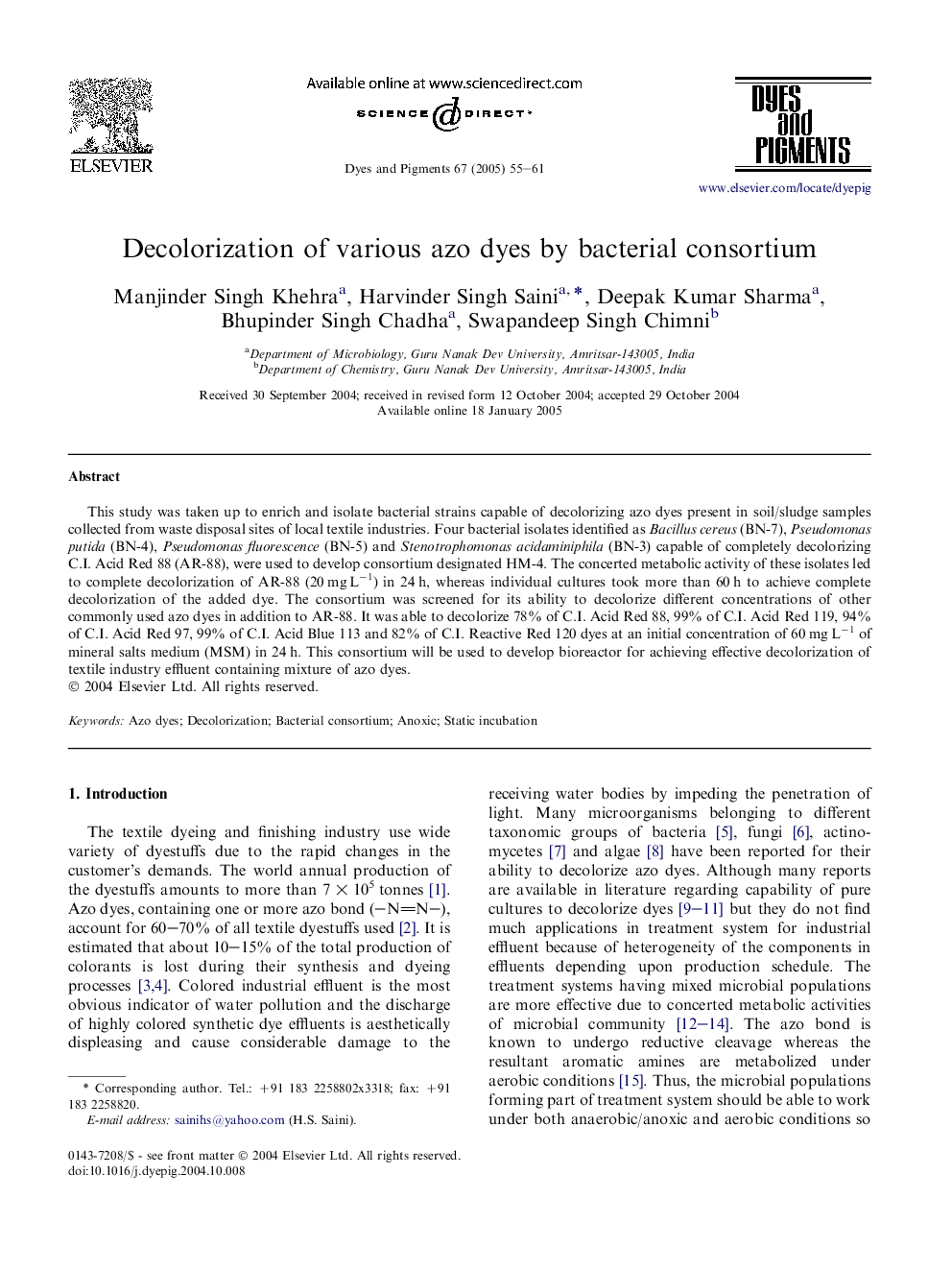| Article ID | Journal | Published Year | Pages | File Type |
|---|---|---|---|---|
| 10266374 | Dyes and Pigments | 2005 | 7 Pages |
Abstract
This study was taken up to enrich and isolate bacterial strains capable of decolorizing azo dyes present in soil/sludge samples collected from waste disposal sites of local textile industries. Four bacterial isolates identified as Bacillus cereus (BN-7), Pseudomonas putida (BN-4), Pseudomonas fluorescence (BN-5) and Stenotrophomonas acidaminiphila (BN-3) capable of completely decolorizing C.I. Acid Red 88 (AR-88), were used to develop consortium designated HM-4. The concerted metabolic activity of these isolates led to complete decolorization of AR-88 (20 mg Lâ1) in 24 h, whereas individual cultures took more than 60 h to achieve complete decolorization of the added dye. The consortium was screened for its ability to decolorize different concentrations of other commonly used azo dyes in addition to AR-88. It was able to decolorize 78% of C.I. Acid Red 88, 99% of C.I. Acid Red 119, 94% of C.I. Acid Red 97, 99% of C.I. Acid Blue 113 and 82% of C.I. Reactive Red 120 dyes at an initial concentration of 60 mg Lâ1 of mineral salts medium (MSM) in 24 h. This consortium will be used to develop bioreactor for achieving effective decolorization of textile industry effluent containing mixture of azo dyes.
Related Topics
Physical Sciences and Engineering
Chemical Engineering
Chemical Engineering (General)
Authors
Manjinder Singh Khehra, Harvinder Singh Saini, Deepak Kumar Sharma, Bhupinder Singh Chadha, Swapandeep Singh Chimni,
